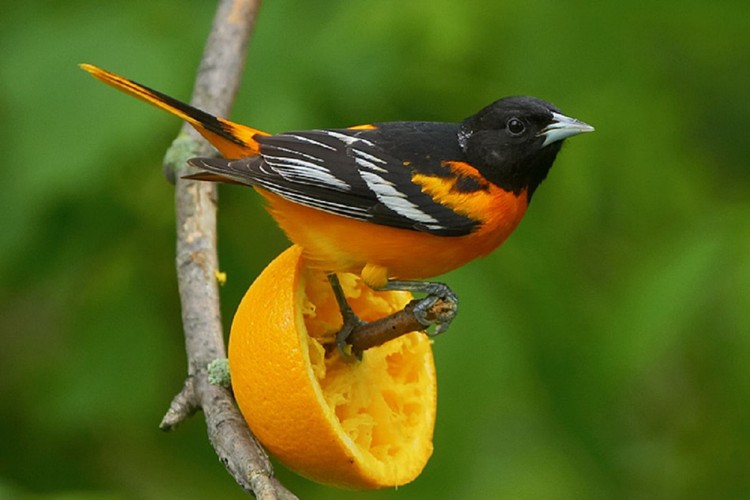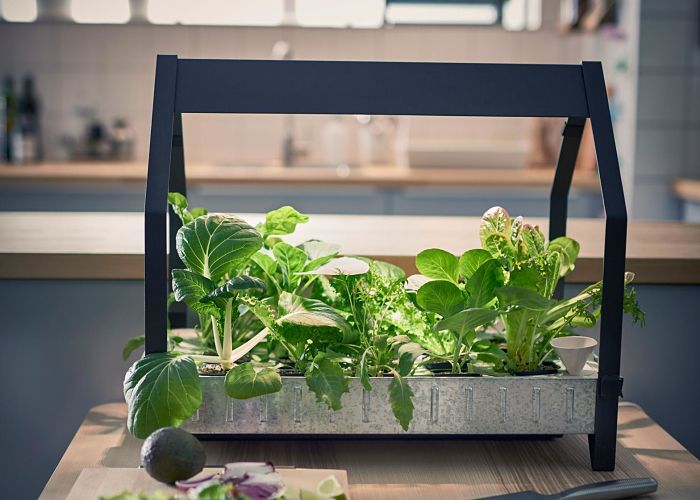Pineapples are a type of bromeliad, which makes them cousins to Spanish moss. Colorful bromeliads commonly grow as house plants. Like other types of bromeliads, pineapple is able to absorb some water and nutrients through its leaves, in addition to its roots.

Pineapples are fruits with great benefits and can be used in many ways. Pineapples can be used in diets ( pineapple diet ), pineapple also serves to balance the body’s pH, you can use it to combat inflammation and prepare tepache, a delicious fermented healthy drink to improve the digestive system.
How to grow a pineapple from its crown?
The mature pineapple plant will be several feet wide and tall, and the mature plant will need a five-gallon pot. It will take at least a year of growth for the plant to reach this size. You can put the pots outdoors during the summer, but you need to bring the plant indoors before the first frost in fall.
Step 1 Buy fresh pineapple.
The next time you buy a fresh pineapple to eat, be sure to choose one that is evenly ripe, with a nice set of healthy, green leaves on top. Avoid those that are mature or have dead or diseased leaves.
Step 2 Cut the crown from the pineapple.
With a sharp knife, cut the top of the pineapple fairly close to the ridge. Carefully cut the peel off the fruit and the rest – it is important to remove the flesh from the fruit as it will rot afterwards. Then make very fine cuts in the stem, until you see a ring of brown dots. These are the “root primordia”, the unformed roots that you are about to grow.
Step 3 Remove the leaves from the stem.
Remove some of the lower leaves from the pineapple stem, leaving about an inch of bare stem.
Step 4 Let the stem dry.
Reserve the pineapple crown for a few days to allow the wound to dry. Pineapples are very susceptible to rot, so it is important that the final cut of the plantation be dried.
Step 5 Plant the pineapple stem.
Fill a 6 “to 8” pot with a light, fast-draining soil mix – such as cactus potting mix – or a mixture of peat, sand, and perlite. If desired, you can dip the end of the stem in rooting hormone before planting. Plant the pineapple crown about an inch deep, gently squeezing the soil around it.
Step 6 Water the pineapple stem.
Water the stem very lightly, just enough to moisten the soil – a spray bottle works well for this. Place the pot in a lighted window, and water the plant when dry, just enough to keep it moist. Don’t use any fertilizer yet. To avoid overwatering, some people put the pot in a terrarium, or a lightly sealed plastic bag, to allow the plant to recycle its own water.
Step 7 Wait for the root to emerge.
To assess progress, very gently pull on the crown to see if it is settling into the ground. Don’t pull hard enough to break the roots.
Step 8 Repot the pineapple plant.
Once the pineapple has taken root firmly, new leaves will begin to grow from the center. At this point, the plant can be replanted in a 10 “to 12” pot, using a rich but fast-draining soil mix. After a year of growth, you can move it to its permanent home in the large 5-liter pot.
Caring for your pineapple plant.
The location of the plant: Your pineapple needs bright light or full sun for most of the day. A little shade can be handled as long as there is plenty of light. Keep the plant away from freezing temperatures. The large pineapple plant in the photo’s winters in an unheated basement in North Carolina, in a warm sunny corner created by the large south-facing window.
Water and Fertilizer: Overwatering and over-feeding are the two best ways to kill a pineapple plant. Water only as necessary, and the plant is fertilized once a month with an organic balanced fertilizer of no more than regular strength. Keep the pineapple plant slightly moist.
Pineapple Growing Season: Your pineapple plant will grow its highest during the warm seasons and will slow down when the days get shorter.
Flowering: Like other bromeliads, it can be very difficult to get a pineapple to flower, and it is not likely to flower or produce fruit for 2-3 years. If it doesn’t flower on its own, a popular way to induce flowering is to expose your pineapple plant to ethylene gas by enclosing your pineapple plant in plastic with a few apples for a few weeks during the winter. As apples decompose, they release ethylene and this encourages flowering.
Harvesting pineapples: Once your pineapple plant blooms, it takes several months for the fruit to grow. Small plants will produce smaller cones, but they are just as delicious! When you go to harvest the pineapples, look for the ones that are uniformly ripe and golden yellow in color.
Growing More Pineapples – All these new pineapples can root to make more plants. When harvesting your pineapples, look at the base of the fruit for small baby shoots. Harvest the pineapple carefully, allowing these shoots to grow a little. These can be carefully removed after being planted in their own pots.








